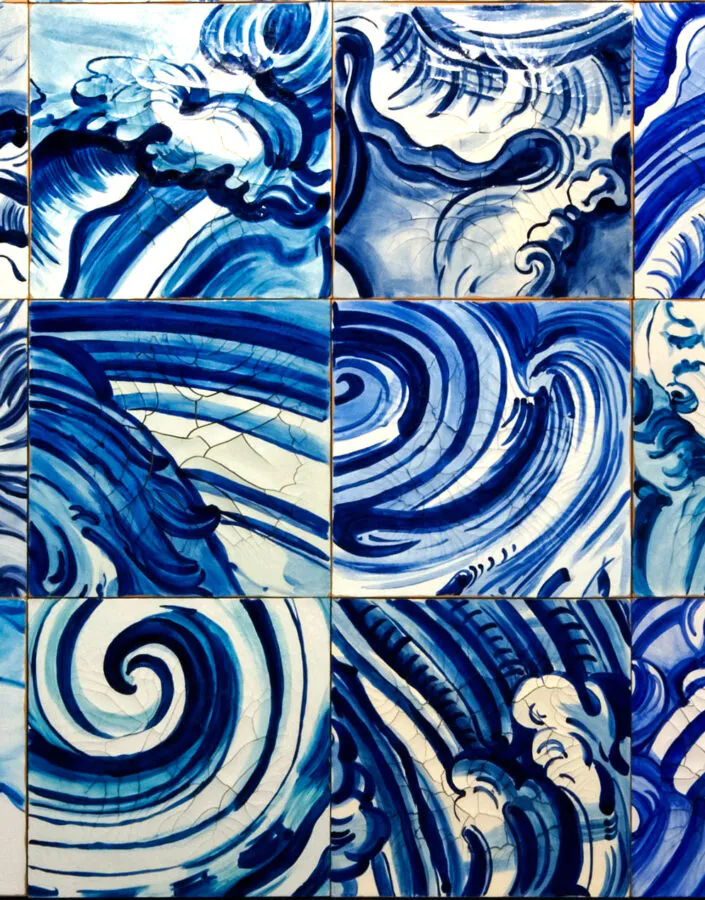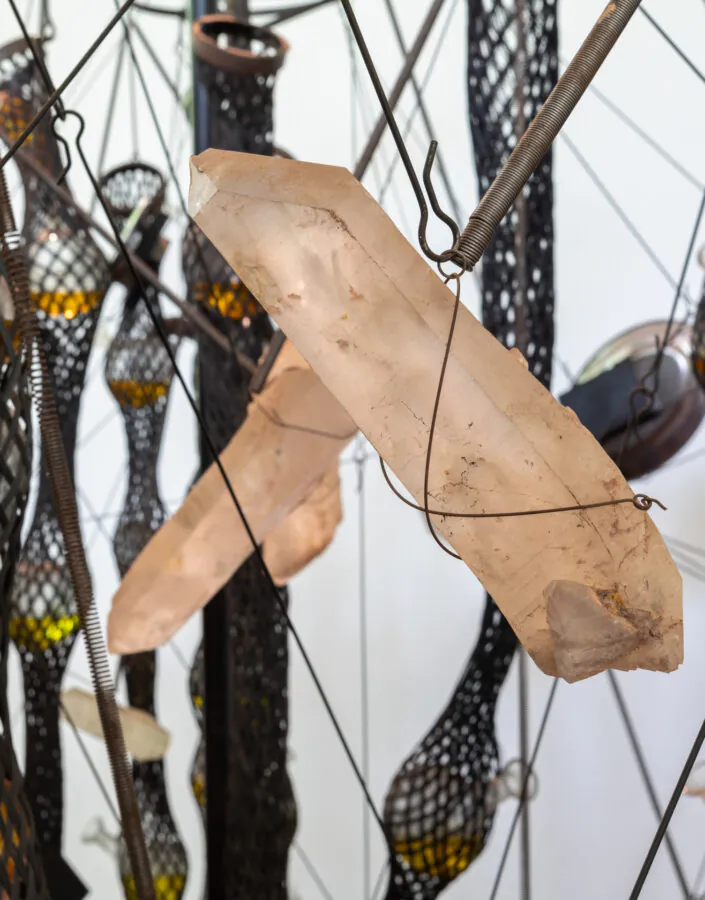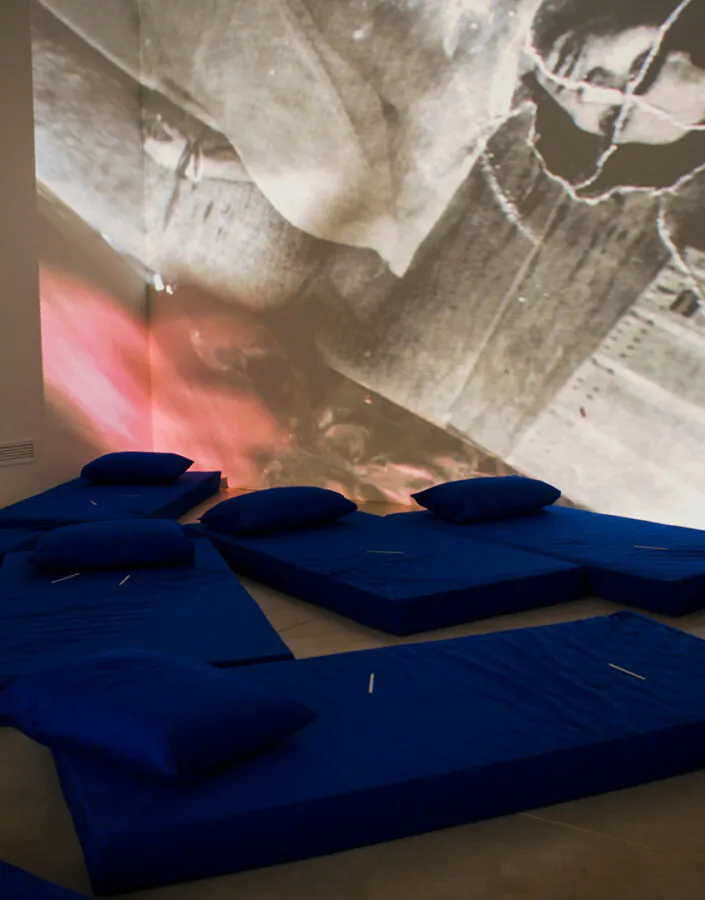À la Lumière des Deux Mondes
2005
Cast bronze, steel cable, laminated steel, iron, gold plating, resin


The work À la Lumière des Deux Mondes (2005) was first exhibited at Musée du Louvre (France), on the occasion of a major exhibition dedicated to the representation of Brazil in the 17th century by the Dutch painter Frans Post (1612-1680). A remarkable aspect in the work of Post is the expressive light, attributed as a singularity of the New World (America) as opposed to the Old World (Europe). With this title – literally “At the Light of Two Worlds,” in English – Tunga also makes reference to light, but in a rather symbolic sense, such as the ideas and thoughts that clashed with the coming together of both universes.
In the work we can see, on one side, hanging skulls and, on the other, by the ground, a series of heads of important personalities of western culture. The faces of such thinkers are entangled by “tipitis,” sort of an indigenous handmade crusher used to prepare manioc flour. The feeling one gets is that the European knowledge is being absorbed by the skeleton lying on the hammock, alluding to the anthropophagy that is part of the American imaginary.


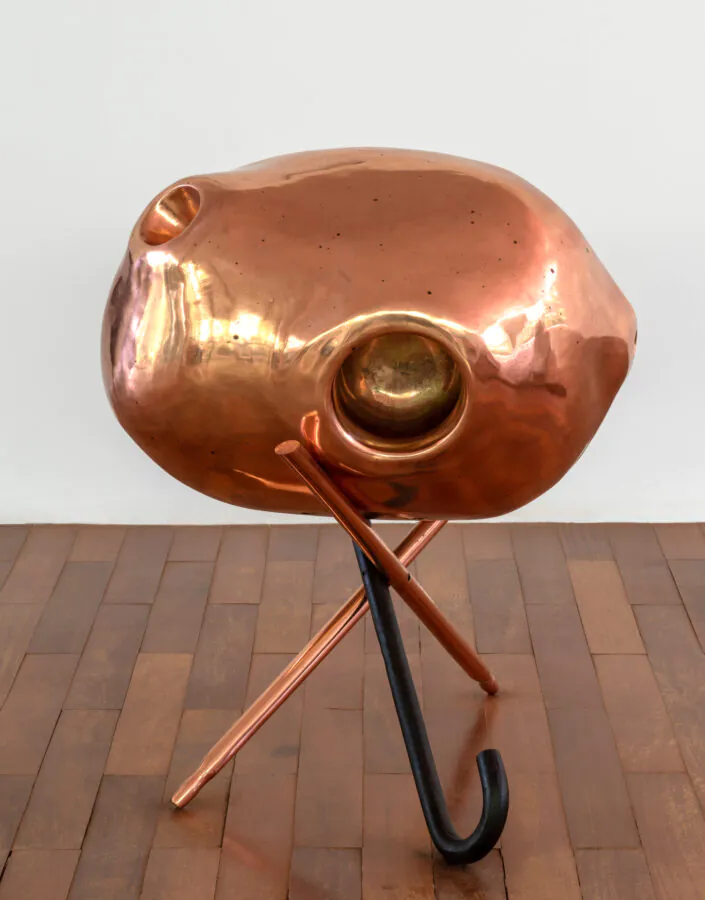
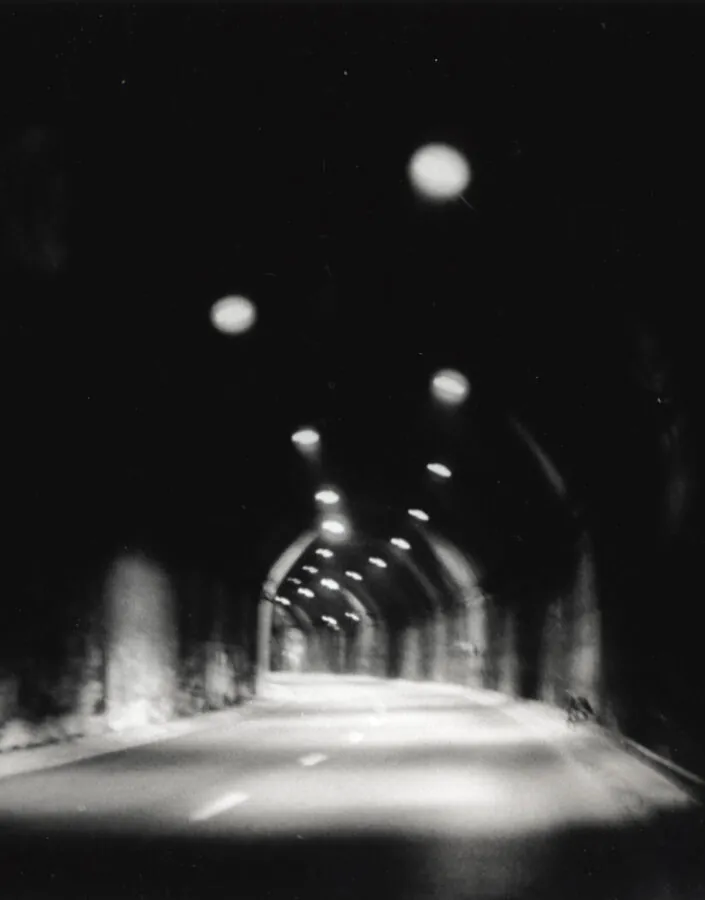
![Cildo Meireles, Através, 1983-89, [detalhe], materiais diversos, 600x1500x1500 cm. Foto: Pedro Motta](https://www.inhotim.org.br/wp-content/uploads/2021/04/inhotim_acervos_artista_cildo_meireles_atraves-705x900.jpg.webp)
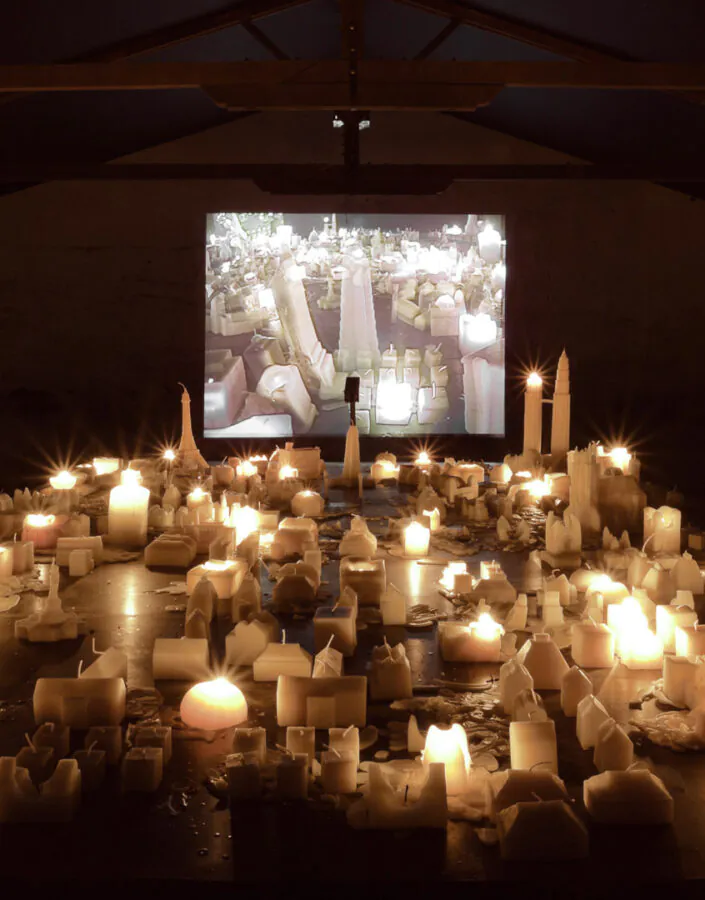
![Adriana Varejão, Carnívoras, 2008, [detalhe], óleo e gesso sobre tela, dimensões variáveis. Foto: Vicente de Mello](https://www.inhotim.org.br/wp-content/uploads/2021/05/20080409_Adriana_Varejao_Carnivoras_Vicente_de_Mello005-705x900.jpg.webp)
![Galeria Carrol Dunham, 2014, [vista interna]. Foto: Daniel Mansur](https://www.inhotim.org.br/wp-content/uploads/2021/04/inhotim_acervos_galeria_carroll_dunham-2-705x900.jpg.webp)
